Galtonia

It is always pleasant to be in the areas decorated with flowers. Today, landscape designers offer many varieties and types of plants that can plant a garden or cottage. One of them is galtonium. This beautiful perennial culture gained its popularity back in the 19th century.
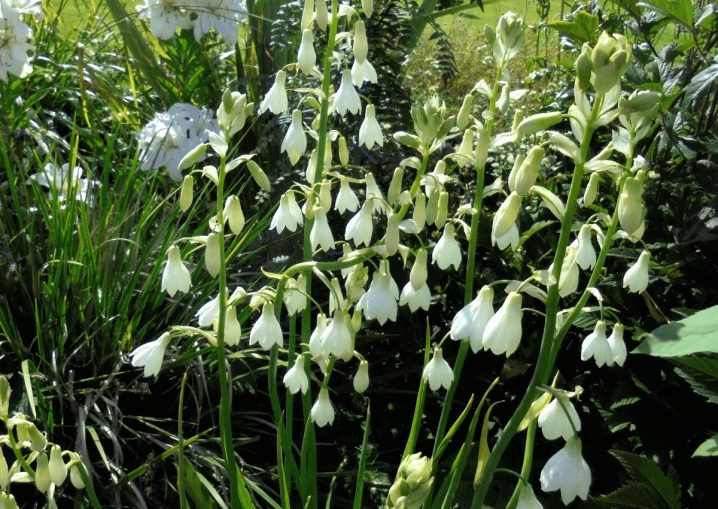
Description
The birthplace of Galtonia is Africa, and more precisely, the Cape of Good Hope. The height of plants is different, it can vary. Basically, the parameters are from 50 to 170 centimeters. Since the culture belongs to the lily family, its roots are strong bulbs and have the shape of a cone.
The foliage is colored green with a gray tint, it is long (about 90 centimeters), but rather narrow.

Pubescence on the leaves is absent. Galtonia peduncles are long, up to a meter. On their tops, wedge-shaped inflorescences grow, consisting of flowers lowered to the ground. The plant blooms in late summer or early autumn and looks decorative. After flowering, the inflorescences are replaced by capsules, in which there are dark grains in the shape of a triangle.
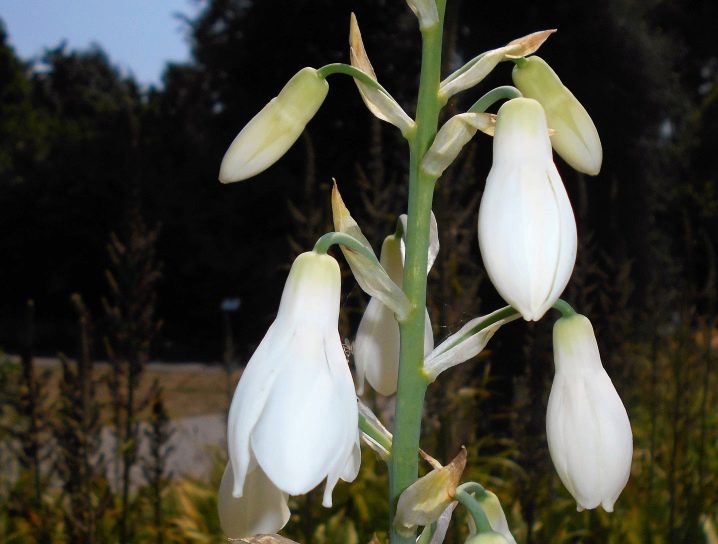
Types and varieties
At the moment, only three types of galtonia are known. Let's dwell briefly on each.
- Whitish. This variety is in demand among gardeners most of all. The plants are somewhat reminiscent of hyacinths and are one and a half meters high. Weakly covered with leaves, the foliage is long, narrow, like a groove. The flowers are white, funnel-shaped, with an amazing delicate aroma.
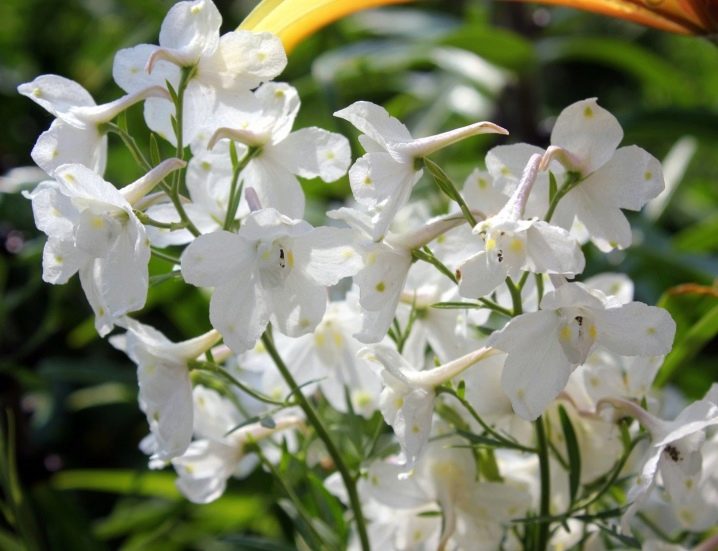
- Excellent. This subspecies is very fond of mountainous areas and grassy plateaus. It grows up to 1.7 meters in height. The flowers are light green or white with a light green tint, form inflorescences in the form of a brush. In cultivated form, the flower is rare.
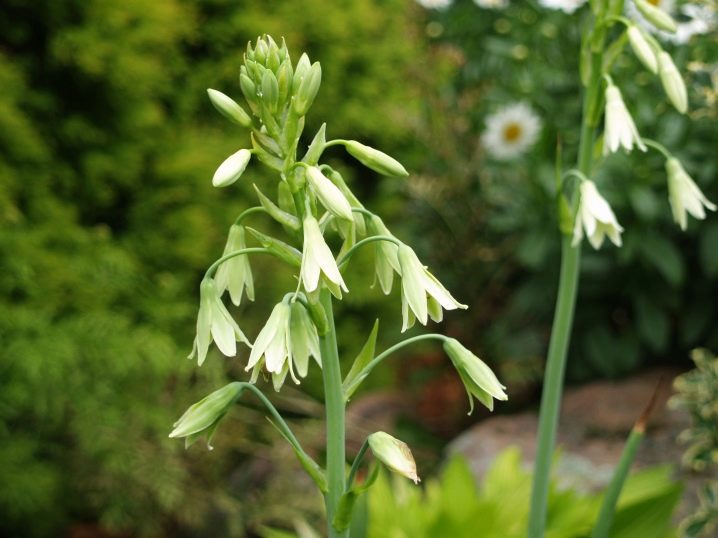
- Green-flowered. The height of this culture is one meter. It prefers a mild climate, so it will grow outdoors only in very warm areas. Otherwise, such a flower can only be grown at home. The flowers of the plant are very beautiful, emerald.
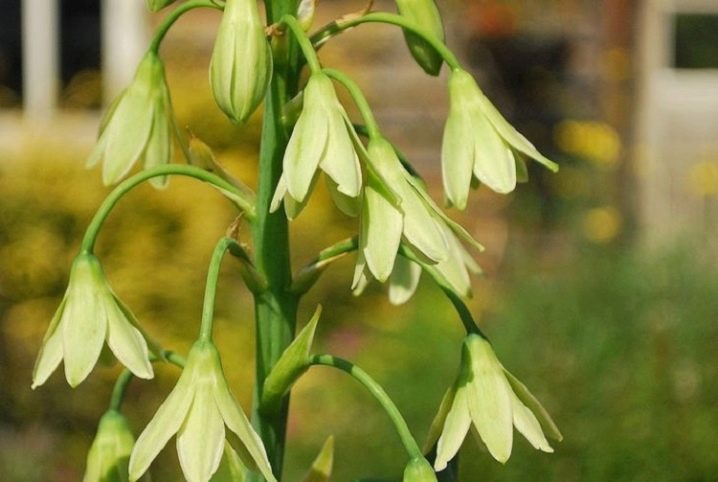
It is worth noting that, unlike many other colors, Galtonia is not classified into grades. It has extremely few species, and breeders are not interested in breeding new varieties and their distribution.

Planting and care in the open field
It is quite possible to grow galtonia on the site, even a novice summer resident can handle it. There are two methods of cultivation: with seeds and with bulbs.
The first option is very poorly spread, it is rarely used, so we will not describe it especially. It is worth mentioning just a few nuances. You need to plant seeds no more than two years old. They need to be collected on their own, otherwise the boxes will burst anyway, and the grains will spread over the site by the wind. They begin to disembark towards the end of April. After 30 days, the sprouts are already strong enough and they will need to be thinned out, leaving a distance of 15 centimeters between them. Galtonia planted with seeds will begin to bloom in three years.
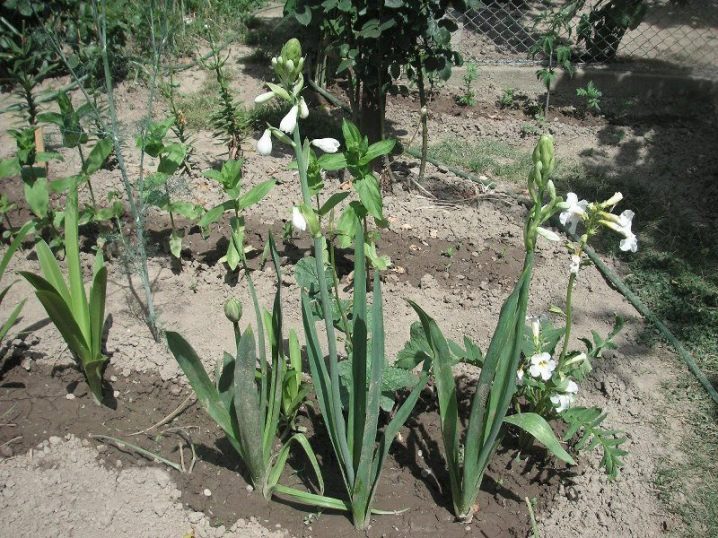
It does not require special care, it is only important to water the sprouts well and from time to time introduce mineral compositions into the soil.
Growing Galtonia from bulbs is more popular. These bulbs can be dug up or bought and are sold at any flower shop. The planting material is carefully examined. The bulbs cannot be soft, rotten. Dense and healthy seed is a priority. If you want Galtonia to bloom early, the bulbs can be germinated.To do this, in the second spring month, they are taken from the storage place, treated with a fungicidal preparation and placed on a clean cloth in a place with diffused sunlight. When the sprouts hatch, they can be planted in pots.
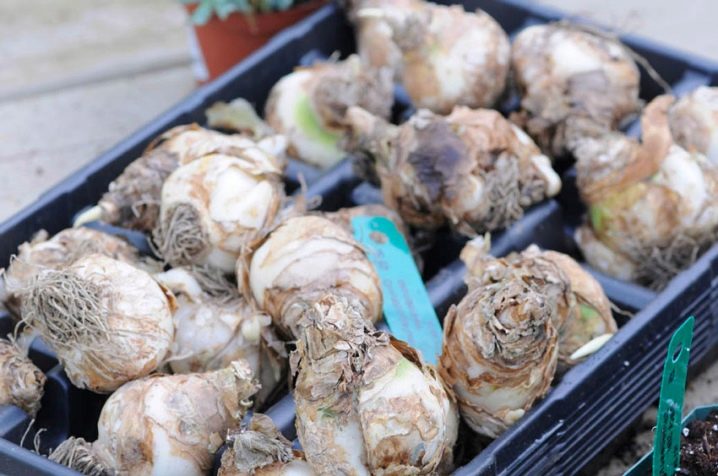
The pots must be clean with drainage holes. They are filled with nutritious loose soil and bulbs are planted there.
It is best to choose a separate pot for each bulb. Further, the sprouts are looked after by simply watering them. The soil in the pots should be slightly damp; flooding is not encouraged. Also, in a room with plants, you should maintain a comfortable temperature. If everything is done properly, then in May the bulbs can be moved to open ground.
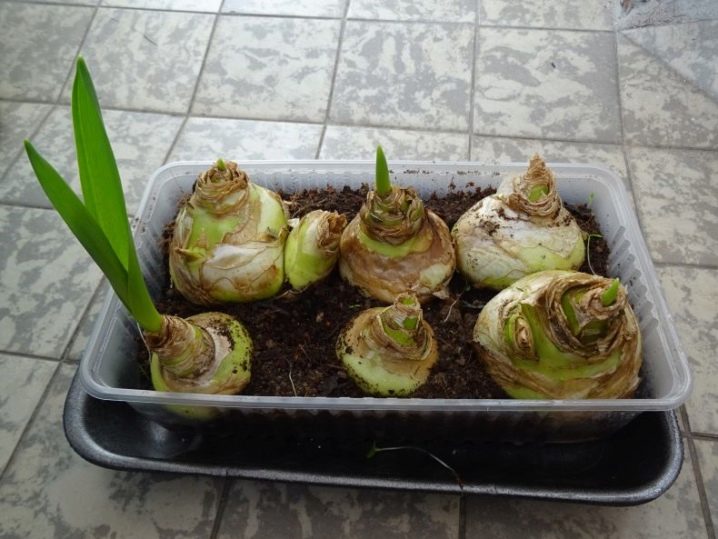
On the site for galtonia, a sunlit place with a low groundwater level is selected... The soil should be neutral in acidity, fertile and loose. Experienced gardeners recommend fertilizing it with organic matter in advance, but if it did not work out, then you can add a handful of humus to the planting holes right during the procedure.
The holes are dug so that the distance between them is 30 centimeters.
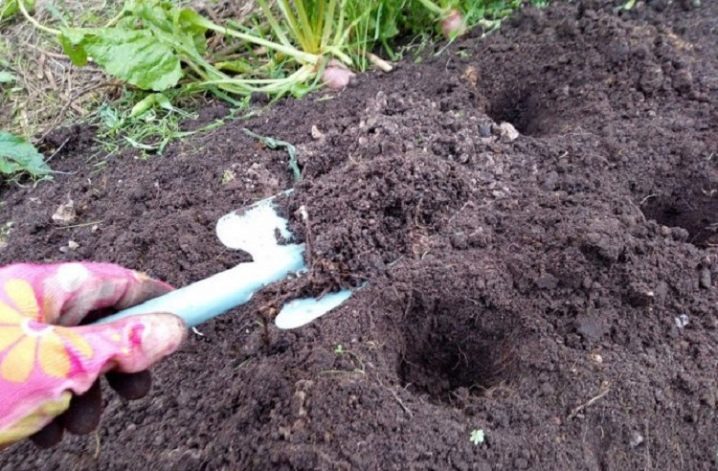
The maximum depth is 23 centimeters, but in general, you need to focus on the size of the bulb. A drainage layer is laid at the bottom of the fossa. Basically, gardeners use coarse river sand. A handful will be enough. Further, the bulbs are pulled out of the previous pots, without shaking off the ground. They are placed in holes, covered with soil and watered well.
Galtonia loves water, but watering it constantly would be a mistake. It is impossible for the earth to be wet all the time. It is possible to maintain the minimum humidity, but not to fill it. If you want to limit the amount of watering or there is no time for them, it is recommended to equip a mulching layer. In general, galtonia is watered as the soil dries up.
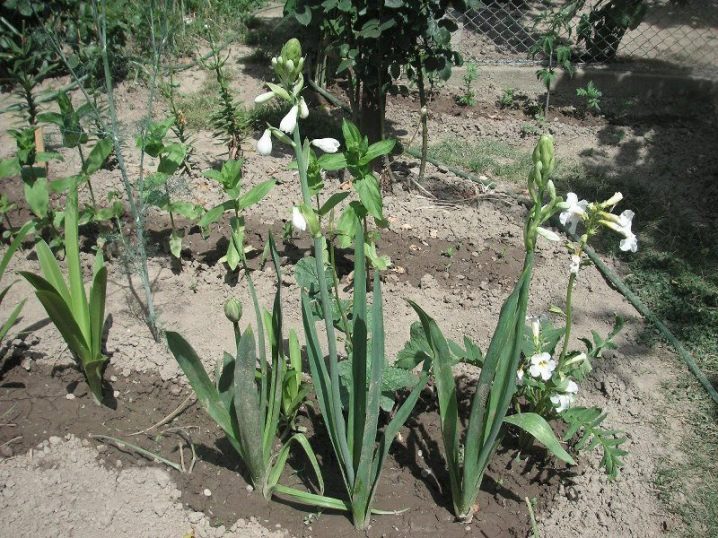
More abundant watering should be provided during flowering - so it will be more lush and effective.
Feeding galtonia is optional. She already feels great without this, provided that the soil was initially fertilized. However, with the help of dressings, you can increase the immunity of the crop, as well as slightly prolong flowering. Organic complexes should not be selected, but mineral complexes will be just right. Any flower dressing will do. It is enough to make them once or twice.

Three more procedures will be important:
- loosening a day after watering;
- timely weeding of the soil;
- pruning the peduncle after flowering.
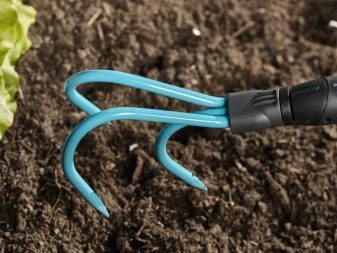

Separately, it must be said about the cultivation of galtonia at home, because many people also practice this method. In general, the requirements are the same, but there are still a few nuances. The rest period is very important for galtonia, therefore, when the plant has faded, the bulb is transferred to a room with a temperature of +5 degrees and not higher. The soil is not watered. In the spring, the plant is brought into a warm room, irrigated and covered with a film until sprouts appear.
In this case, it is worth keeping the culture in a place with diffused light.
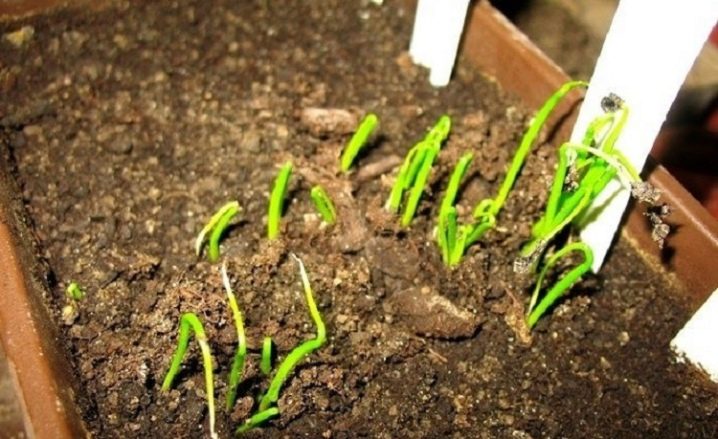
When the sprouts grow to 10 centimeters, the shelter is removed, and the pots are transferred to the eastern windowsill. Water the soil as needed, as in street conditions, but you will have to feed it more often, about twice a month. In this case, mineral complex compounds are also used. Spraying and humidifying the air is not required for the flowers.
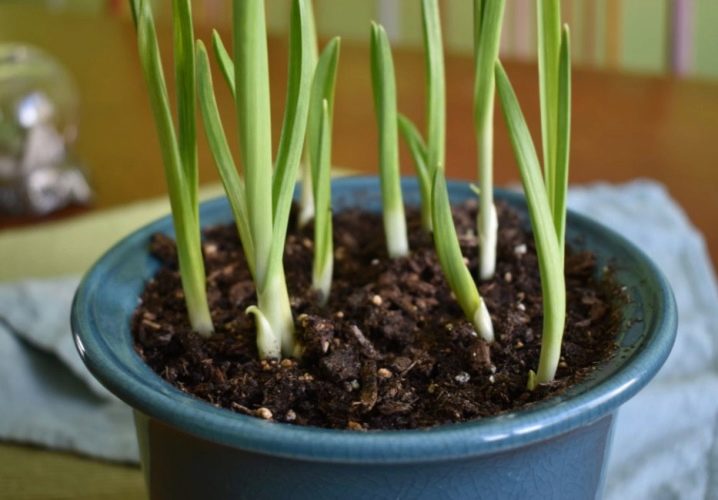
Diseases and pests
Galtonia is very weakly susceptible to disease. Basically, it is only affected by fungi if improper watering is organized. Then it can be attacked by rot and other fungal ailments. It is not difficult to treat them. If it is a house plant, it can be transplanted into another pot by cutting off diseased parts and replacing the substrate. It is also worth treating with fungicides. A culture growing in open ground can be easily treated with preparations.

In both cases, it will be necessary to establish an irrigation regime.
Aphids, scale insects, ticks usually do not start, but slugs can become a real misfortune. These creatures love moisture, and Galtonia needs it.To chase away the slugs, you can set the trap around the perimeter or sprinkle the substrate with pine needles. But they can increase the acidity, this must be taken into account. If the acidity mark is in the extreme limits, then it is better not to risk it and use wood ash instead of needles.
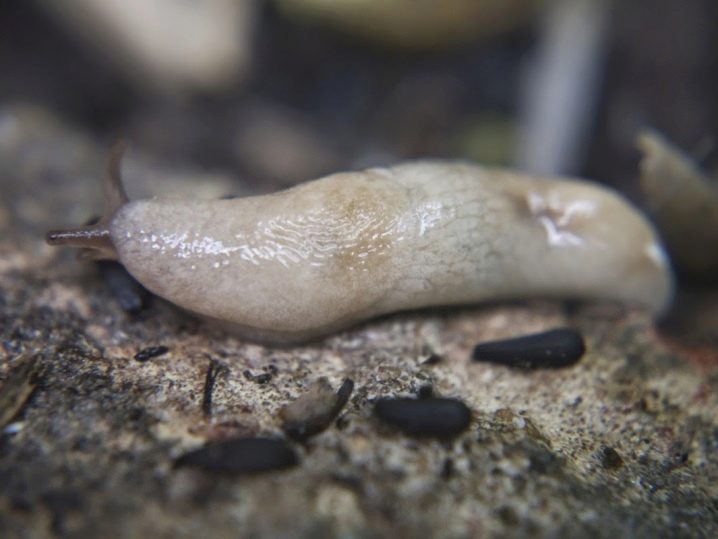
Wintering
Galtonia is a perennial plant and in warm climates it will calmly endure the winter period. In such regions, it will be enough to cut the peduncle and cover the flower for the winter with a layer of mulch made from sawdust, peat or spruce branches (20 centimeters).
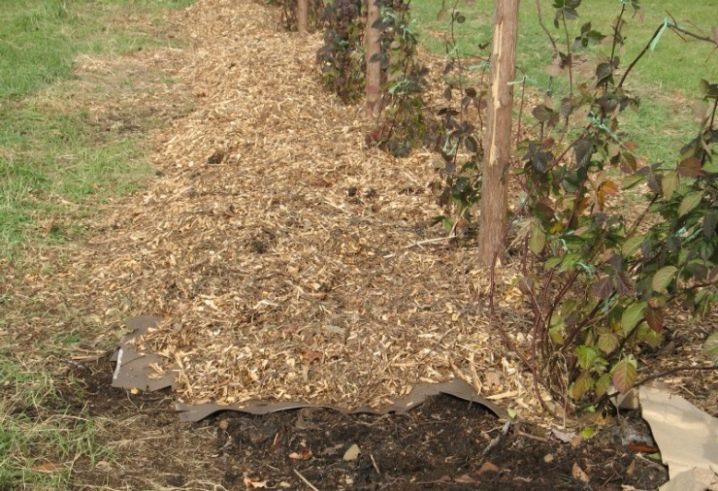
If the winter is cold, then you should do the following:
- remove the bulbs from the ground at the end of October;
- place in a well-ventilated area and dry for 7 days along with foliage;
- find the neck of the bulb, back off 2 centimeters and cut off the foliage, leave the roots in place;
- then dry the bulbs for a week at a standard temperature of + 18-22 degrees;
- put them in dried sand and store in a place with a temperature of + 10-15 degrees, while making sure that they do not touch each other.

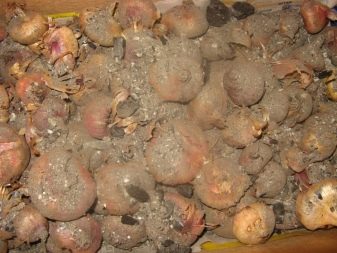













The comment was sent successfully.